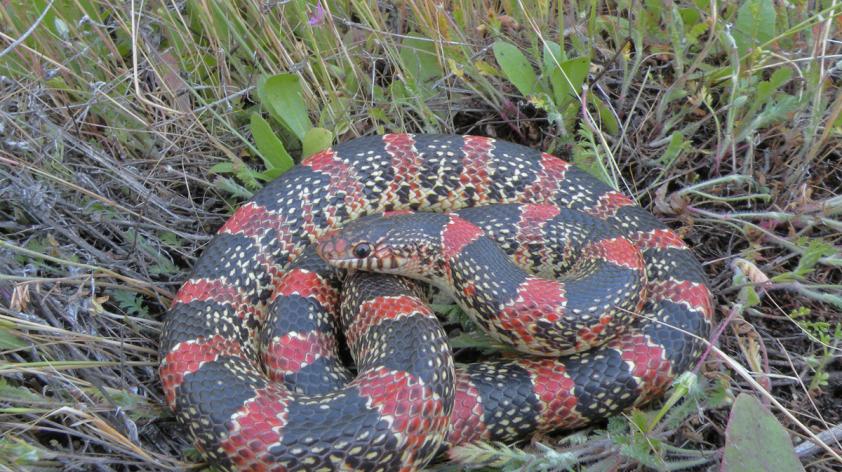
Did the rains increase snake populations? Not necessarily
Reptiles are often the subjects of fear and wonderment but unfortunately they are also often sensationalized by the media and the public. I have already read several reports of the rains of 2017 “increasing snake populations” and “producing a bumper crop of snakes”. That’s not exactly how it works. I have been studying reptiles at the Safari Park Biodiversity Reserve (adjacent to the Safari Park) for 20 years and have been searching for reptiles in San Diego county for my entire life so I’m pretty familiar with our native reptiles and their activities. The drought years of the early 2000’s were dismal for acquiring data on snake populations whereas I have already seen an increase in snake activity this year.
Reptiles and other animals that live in dry climates such as San Diego County are tasked with the issue of maintaining hydration. Snakes have it easier than most animals in that they can go long periods without eating or drinking but unfortunately that comes at a cost. In dry weather and during drought, reptiles often become inactive staying deep underground where it is cool and moist. It is not an easy existence for many, particularly during multiple-year droughts, but it’s a strategy that works. Small mammals and other snake prey items also stay hidden during drought and their populations often decrease, so the snakes stay underground, maintaining hydration levels and preserving precious energy.
In years of heavier rains, snakes are often more active than in dry years, staying closer to the surface where they can easily find food and mates while maintaining their water balance. The amount of food they find determines their activity levels, growth and reproductive rates but it also takes time for them to build and store this energy. In turn, small mammal populations don’t increase overnight when the rains begin following a drought.
In addition, it usually takes a season for the plants to rebound in turn delaying the production of food levels ideal for mammals to breed at normal rates. This means snake populations won’t increase for at least a year. So why are so many people seeing snakes? One reason is that the ground is moist and the vegetation is lush so snakes are closer to the surface than they were during the drought. Most of our local reptiles breed from April to June so the snakes are actively moving about and finding mates. Prey species are actively moving as well which is another reason why snakes are out foraging in order to build enough energy to produce young.
In mild temperatures snakes may be active all day but as it heats up they are mostly active in the mornings and afternoons when people are typically out enjoying the great outdoors. In July and August many snakes become nocturnal while others go underground and remain dormant. Snake babies either hatch or are born (rattlesnakes and garter snakes have live birth) in the late summer and early fall which is another reason why people are more likely to come into contact with snakes at this time of year.
So there really aren’t more snakes in 2017! The reality is that conditions are just more optimal for snakes to be progressing with their lives in the fantastic San Diego climate. If you stay vigilant, keep your eyes on the ground and don’t go near any snakes that you come across you will be perfectly safe. Never attempt to capture or kill a snake as that is exactly how more than 90% of bites occur. It should also be noted that many of our snakes are protected by law (including the Red diamond rattlesnake) so killing these animals is illegal. Appreciate reptiles as they are a part of our natural world and now more than ever they really could use some positive PR!













